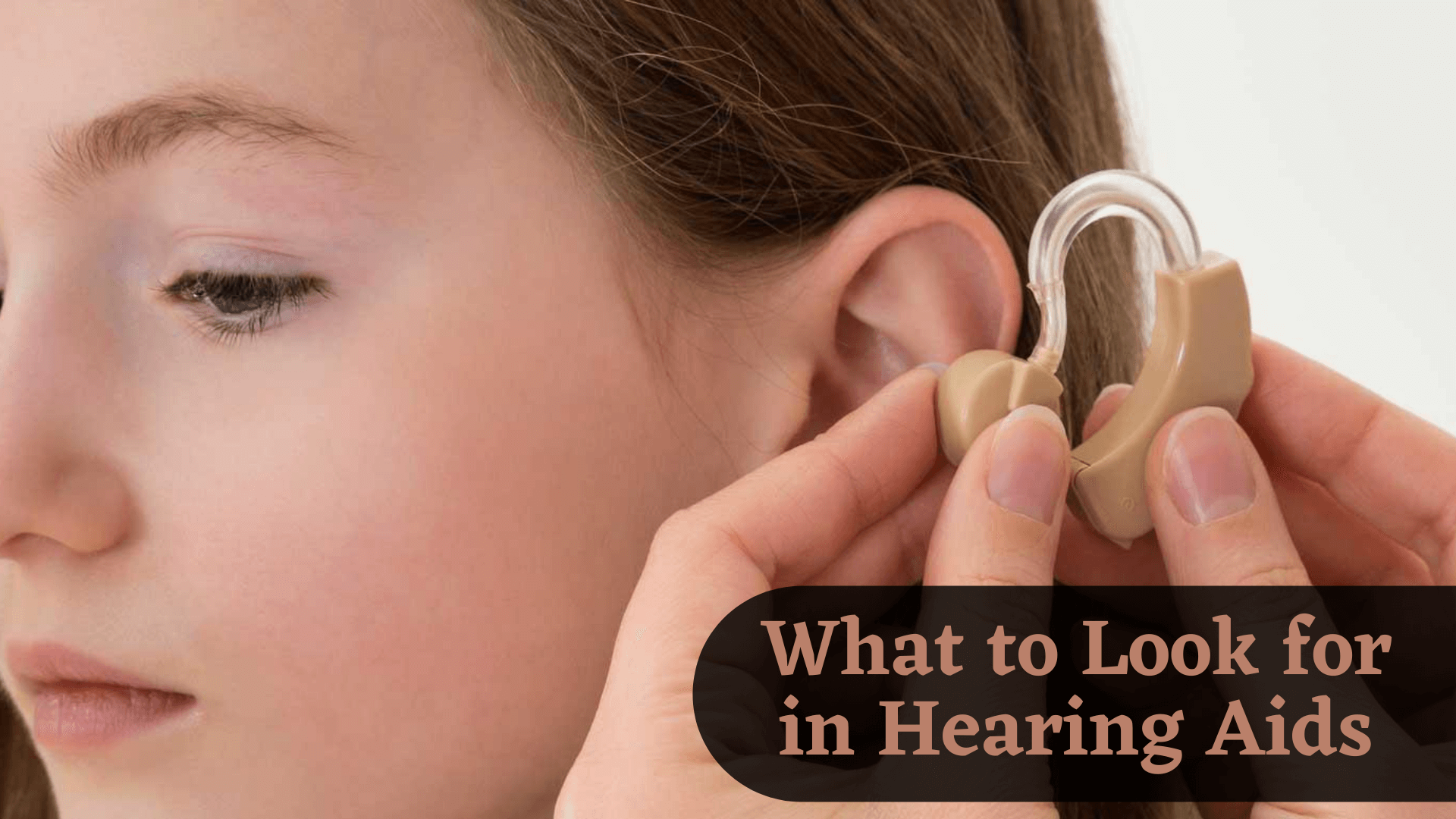Choosing a hearing aid can sometimes be a hassle particularly because there are a lot of different models with various features which come in different styles. It is therefore important to have a proper knowledge on the
important features and elements that you must look for in a hearing aid.
Consulting with an ear specialist to carry out a proper ear evaluation to help you identify the cause of hearing loss and determine a solution is a good place to start when choosing a hearing aid, but having a certain amount of knowledge about how these aids work and their features
before your consultation would not hurt, this will aid you in identifying the elements that are best suited for you in terms of prices, quality, features making the process a lot easier.
The entire essence of obtaining a hearing aid is to enable you to hear better thereby improving your quality of life. Obtaining a hearing aid with just the right components will enable achieve this objective.
IMPORTANT FEATURES OF A HEARING AID:
1. Directional microphones: The directional microphones enables the hearing aid reduce noise in noisy environments. In more advanced hearing aids they usually come in pairs, one in front and one behind, while in other hearing aids they are controlled using a button on the hearing aid or a remote.
2. Digital noise reduction: The digital noise reduction is a major improvement in the modern day hearing aids. As the name implies, its function is to screen noise from the environment to ensure that hearing is
efficient and uninterrupted.
3. Telephone adaptation: Another important improvement of hearing aids is the fact that they are now adapted to detect phone signals and these sounds can be clearly heard with the hearing aids. This is made possible by the presence of the telecoil which picks up electromagnetic waves.
4. Wireless/Bluetooth connectivity: This is a new and improved technology that enables the hearing aid to receive from a blue tooth transmitter or a wireless device such as the cell phone, and laptop.
5. Automatic programming: This feature although commonly present in more advanced hearing aid has made the entire hearing aid experience more convenient. This technology consists of a program which studies your hearing environment, and makes automatic adjustments.
6. Remote controls: This is a very common feature of many hearing aids. Aids come with remote controls with which you can make adjustments and input programs easily.
Having stated earlier that there are different models and styles of hearing aids with variations in sizes, colours, and weight, these hearing aids are continuously being improved to increase the efficiency of these devices. You
must also consider:
1. Price: When it comes to purchasing a hearing aid you must not compromise but you also must consider the price you can afford. You need to evaluate the price and quality of hearing aid you wish to obtain to ensure it gives you the best hearing experience.
2. Proper fitting: You need to ensure that the hearing aids fit properly and securely. Some brands offer custom made hearing aids where you can order the hearing aid beforehand and it is made to replicate the shape of your ear. But there are others which are not custom made but would also provide proper fitting. It is important for a hearing aid to be very comfortable because it is worn for long hours of the day.
3. Additional accessories and applications: Hearing aids come with additional accessories and apps which help to make the experience a lot more convenient and helps you adapt easily. One popular accessory is the remote control. It also comes with applications and features which enables the aid to connect with other wireless devices. It’s important to ensure that these are available in the hearing aid of your choice.
4. Return policies: The return policy is important in situations where the hearing aid may not function as expected or may be uncomfortable. You must inquire about the return policy and warranty the brand you wish to obtain from has.
Now let us look at the various models available in the market and the unique elements which will aid you in deciding which is best suited for you.
1. Behind The Ear(BTE): This is the most common hearing aid available and its the best for mild to extreme ear loss. The hearing component is usually rested at the back of the ear.
2. Receiver In Canal(RIC): The RIC is smaller than the BTE because the receiver is usually inserted in the ear canal. It usually contains more features than many other styles but may be easily damaged by moisture and ear wax.
3. In-The-Ear: These types of ear aids are usually custom made and are fitted in the ear canal, the hearing components resting outside the ear. They
are usually available in colors that blend with the skin.
4. Invisible in the canal (IIC): These are the smallest type of hearing aids available and because of their sizes do not have manual controls. The IIC is placed deeply in the ear and are practically invisible. While these are very discreet, they are usually easily susceptible to moisture and ear wax damage.
5. Low profile hearing aids: These hearing aids usually come in larger sizes than other hearing aids making them easier to insert and remove, it also has more features. But it may become very uncomfortable because of its large size.




